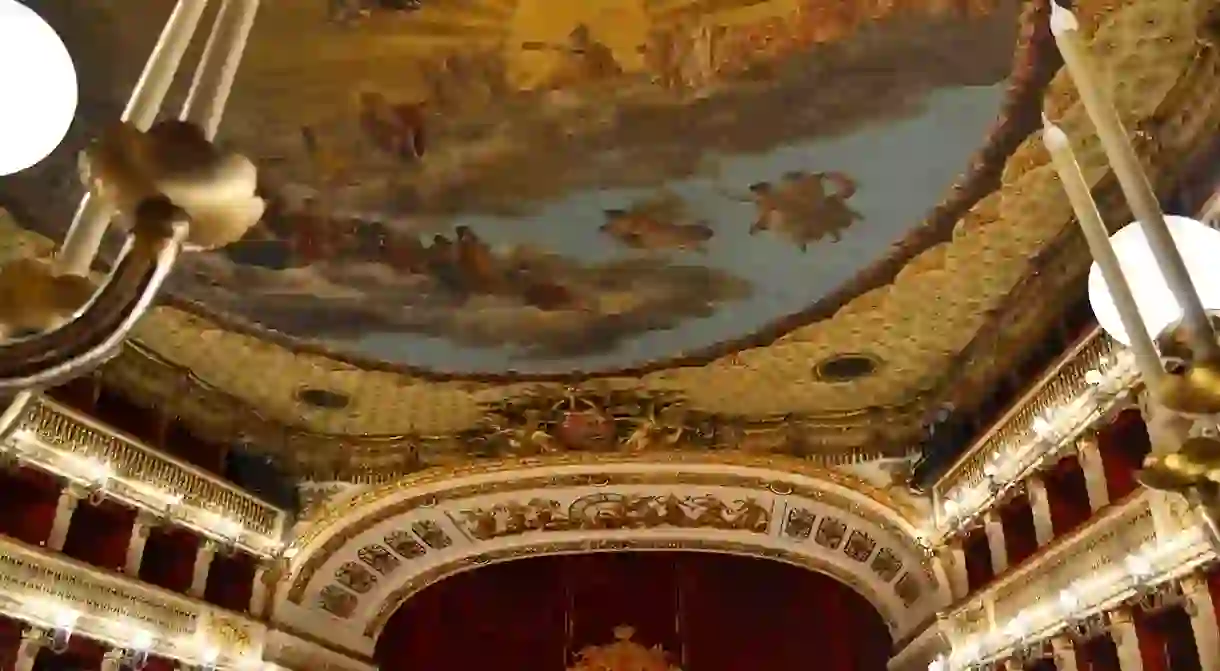A Brief History of the Oldest Opera House in the World

Naples is well-known for its legendary pizzerias, magnificent views of Mount Vesuvius and housing treasures from Pompeii in the National Archeological Museum, but few people realize the city is also home to the oldest opera house in the world. Teatro San Carlo, first opened in 1737, was commissioned by the Bourbon King Charles VII who wanted to endow the city of Naples with a magnificent theater that would demonstrate his power and assure his artistic legacy.
Teatro San Carlo, situated adjacent to the Royal Palace in Naples’ central Piazza del Plebiscito square, is one of the most opulent sights in Campania’s capital. Built as the opera house for the Bourbon King Charles VII, who resided in the Royal Palace, it predates both Teatro La Scala in Milan and Teatro La Fenice in Venice by nearly half a century. Teatro San Carlo was designed by Italian architects Giovanni Antonio Medrano and Angelo Carasale whose model would be replicated for subsequent theaters built in Europe.

The opera house is built in a horseshoe shape and included 184 boxes to accommodate 1,379 people. It was inaugurated on November 4, 1737, the sovereign king’s name day, with a performance of Achille in Sciro by Neapolitan composer Domenico Sarro and greatly admired for its elegance: the theater featured gold decorations and blue upholstery – the colors of the Bourbon – a breathtaking ceiling fresco depicting Apollo and Minerva, and a royal box topped with a regal crown. A portion of the theater was destroyed by a fire in 1816 but King Ferdinand IV, son of Charles VII, rebuilt it in less than a year. Influential French writer Stendhal, who attended its re-opening performance, declared that ‘nothing all over Europe… comes close to this theatre or even gives the faintest idea’, a testament to its glory. It was updated again in 1844 to include new decorations and the upholstery was changed from blue to the red velvet we see today.

Neapolitan opera, which focused on the solo voice and beautiful style, was dominant in 18th-century Europe and Naples became a focal point for composers throughout the continent and it was a point of prestige to have a composition performed on the stage of Teatro San Carlo. Naples and its opera house lost prominence after the unification of Italy in 1861 which consolidated power into the single state of the Kingdom of Italy with Rome as its capital.

Teatro San Carlo was damaged by bombs during World War II and underwent a significant transformation between 2008-2009 that restored its décor, added modern day amenities and improving its stage machinery. Today, the theater is thriving under the artistic direction of Paolo Pinamonti. The opera seasons runs from January to May while the ballet season runs from April to June. Tickets for shows are available on the Teatro San Carlo website.













